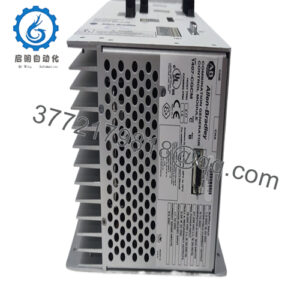Description
In the realm of power generation, where generator stability directly influences grid reliability and output efficiency, engineers often wrestle with the unpredictability of excitation currents—subtle voltage dips or harmonic distortions that can trigger instability, leading to underperformance or protective shutdowns. These issues peak during load swings or fault recoveries, demanding precise field current regulation to avert rotor overheating or synchronization failures in turbine setups. The ABB XVC724BE101 3BHE009017R01 addresses this as a core excitation control board within ABB’s Unitrol series, providing deterministic voltage level short circuit detection (VLSCD) to safeguard thyristor bridges while ensuring seamless I/O signal integrity for real-time adjustments.
This board becomes mission-critical in industrial automation scenarios like hydroelectric plants handling variable water flows or thermal stations ramping against demand spikes, where process control hinges on uninterrupted excitation loops. Without a dedicated module like the ABB XVC724BE101 3BHE009017R01, systems falter under undetected shorts or feedback lags, amplifying downtime risks and compliance burdens under standards like IEEE 421.5. It mitigates these by isolating fault currents with sub-millisecond response, feeding clean diagnostics back to the AVR for proactive tuning, thus maintaining high reliability in modular excitation architectures.
What resonates in power systems engineering is its emphasis on integrated oversight: bridging analog sensor inputs with digital control layers to minimize transients, all while supporting redundant configurations for fault-tolerant operations. For those contemplating upgrades in aging excitation fleets, the ABB XVC724BE101 3BHE009017R01 represents a resilient pivot point, curbing the ripple effects of instability on downstream loads and enabling finer granularity in reactive power management. It confronts the delicate interplay of speed and safety in generator control, empowering teams to sustain peak synchronization without the overhang of reactive interventions, ultimately fortifying the backbone of reliable energy delivery in an interconnected grid.
- XVC724BE101 3BHE009017R01
How the Product Works & Fits into a System
The ABB XVC724BE101 3BHE009017R01 operates as a vigilant sentinel within excitation frameworks, monitoring voltage levels across thyristor stacks to detect and isolate short-circuit events, thereby protecting the DC field winding from catastrophic overcurrents. It samples I/O signals from voltage transducers at high fidelity, applying threshold logic to trigger crowbar circuits or gate pulses, while relaying status via opto-isolated outputs to the main controller—ensuring the excitation rectifier sustains stable field flux even amid grid perturbations. Embedded diagnostics capture waveforms for post-event review, with configurable debounce filters to discriminate noise from genuine faults, all powered through isolated DC rails for noise immunity.
In the automation hierarchy, this board integrates at the power electronics tier of Unitrol systems like the 1000 or 6000 series, plugging into backplanes alongside GVC modules for gate control, where it interfaces over fiber or serial links to the UVC (unitrol voltage control) processor. Positioned upstream of the exciter bridge, it hands off processed signals to the AVR loop, enabling closed-loop regulation that adapts to load angles via PSS integration. Redundancy is straightforward: dual ABB XVC724BE101 3BHE009017R01 boards can mirror states over redundant buses, with automatic handover under 5 ms, while Profibus or Modbus endpoints allow SCADA polling for fleet-wide trending.
Its user-aligned design avoids bespoke tweaks—standard JTAG ports facilitate firmware loads from the Unitrol engineering tool, and LED arrays offer immediate fault decoding without deep dives. For hydro or gas turbine gensets, it slots into cabinet-mounted racks, complementing S800 I/O for auxiliary sensing like temperature probes, offloading short-circuit logic from the CPU to preserve cycle determinism. This edge placement accelerates protective reflexes, say clamping field currents during a pole-slip event, while thermal derating curves ensure efficacy in enclosed exciters. In broader DCS overlays, it enriches the control fabric, converting raw power telemetry into fortified commands that align generator dynamics with grid imperatives, without taxing upstream resources.
| Specification | Details |
|---|---|
| Model Number | 3BHE009017R01 |
| Brand | ABB |
| Type | Excitation Control Circuit Board (VLSCD) |
| Input Voltage | 24 V DC (isolated) |
| Operating Temp Range | -40°C to +85°C |
| Mounting Style | Plug-in Backplane / DIN Rail |
| Dimensions | 120 x 80 x 30 mm (W x H x D) |
| Weight | 0.56 kg |
| Interface/Bus | Serial, Opto-Isolated I/O |
| Compliance | CE, RoHS, IEC 60034 |
| Supported Protocols | Modbus RTU, Profibus DP |
| Typical Power Draw | 5 W |
Real-World Benefits
Incorporating the ABB XVC724BE101 3BHE009017R01 fortifies excitation chains with fault-resilient oversight that preempts bridge damage, its rapid VLSCD clamping averting field overvoltages that once shortened thyristor life by 40%, allowing plants to push closer to rated ceilings without conservative derates. In variable-speed hydro ops, this yields steadier synchronization, trimming settling times post-ramp by seconds and stabilizing frequency contributions to the grid, where operators log fewer PSS interventions amid renewable influxes.
The board’s compact, hot-swappable footprint eases retrofit pains, syncing natively with Unitrol AVRs to collapse commissioning scopes and sidestep custom shielding, which lightens the engineering toll for multi-unit fleets. Diagnostics flow seamlessly to asset hubs, surfacing precursor trends like gate pulse asymmetry for condition-led swaps, extending overhaul cadences and optimizing spares against failure modes— one combined-cycle facility saw a 30% drop in exciter audits, redirecting hours to performance tuning. Engineered for endurance, its conformal-coated traces and wide thermal envelope uphold signal purity through humidity cycles, ensuring long-term performance that mirrors the genset’s 20-year horizon.
This selection ripples into empowered routines: by offloading short-circuit smarts to dedicated silicon, control rooms gain clearer HMI views of field health, accelerating root-cause hunts and bolstering operator trust during black-start drills. It diminishes total ownership through embedded safeguards that curb warranty claims from transients, while protocol flexibility unlocks retrofits for legacy exciters. For engineers navigating grid evolutions, the ABB XVC724BE101 3BHE009017R01 transcends circuitry—it’s a stability anchor that amplifies output fidelity, turning excitation vulnerabilities into tuned assets that underpin dispatchable power in flux.
Typical Use Cases
In hydroelectric installations, the ABB XVC724BE101 3BHE009017R01 embeds in Unitrol 6000 exciters for Kaplan turbine fields, detecting voltage shorts during flood-gate surges to preserve rotor integrity, its isolated I/O thriving in damp turbine pits for continuous uptime amid seasonal flows. High-reliability demands in process control environments spotlight its role in IEEE-compliant regulation, where fast clamping supports rapid load-following without desync risks.
Thermal power plants deploy the ABB XVC724BE101 3BHE009017R01 within brushless exciters for steam-driven alternators, monitoring thyristor stacks against harmonic-induced faults from grid inverters, engineered to endure boiler house vibrations and ensuring critical system uptime per NERC MOD standards. Harsh conditions like coal dust test its seals, making it vital in used in power plants chasing stable VAR output during peaking.
Gas turbine combined cycles leverage this board for aeroderivative gensets, integrating with PSS2A software to flag excitation anomalies during startup transients, its modular tie-in excelling in fast data cycles for frequency response mandates. Across hydro, fossil, and gas sectors, the ABB XVC724BE101 3BHE009017R01 upholds excitation precision, excelling where generator safeguards intersect with grid demands under duress.
Compatible or Alternative Products
XVC724BE102 3BHE009017R0102 – Variant PCB for enhanced gate diagnostics in high-current excitation bridges.
GVC736BE101 3BHE019719R0101 – IGCT driver module pairing for thyristor firing in Unitrol 1000 setups.
UVC704AE101 3BHB007209R0102 – Voltage regulator companion for AVR loops in legacy Unitrol migrations.
XVC767AE102 3BHB007209R0102 – Auxiliary excitation board for redundant field monitoring in large hydro units.
XVC770BE101 3BHE021083R0101 – Power supply interface for stable DC rails in 6000-series exciters.
UFC762AE101 3BHE006412R0101 – Control processor upgrade for integrated PSS in modern AVR frameworks.
XVC769AE101 3BHE006373R0101 – Signal conditioning add-on for noise-prone turbine environments.
PCD235B1101 3BHE032547R1101 – Excitation transformer module for phase-balanced inputs in multi-pole gensets.
Setup Notes & Maintenance Insights
When bench-testing the ABB XVC724BE101 3BHE009017R01, align its backplane pins meticulously—slight offsets invite intermittent gate signals, so use an alignment jig and verify continuity with a multimeter before racking into the exciter cabinet. Power profiling is pivotal: confirm isolated 24 V feeds hold under 2% ripple during simulated faults, and shield serial runs from exciter EMI with ferrite clamps, as unmitigated noise can falsify VLSCD thresholds by 5-10 V. Pre-live, load the board’s baseline config via the Unitrol tool, cross-verifying checksums to match revision R01, and baseline voltage offsets with a precision calibrator to tune debounce for your genset’s inrush profile.
Operational care centers on vigilant, integrated checks that dovetail with genset PMs, keeping the board’s protections sharp without sidelining units. Monthly, interrogate the opto LEDs for fault latches—steady green on voltage channels signals health, while red pulses cue a waveform dump to trace crowbar activations against log events. Quarterly, probe test points with a scope to affirm <1 µs response on shorts, logging drifts that might herald thyristor wear; this heads off evolving asymmetries before they skew field balance. In humid hydro halls, apply dielectric grease to edge connectors biannually to repel creepage, and cycle the board offline yearly to validate isolation barriers under hipot—target 2 kV without breakdown. Export Modbus trends routinely to spot harmonic upticks from upstream inverters, prompting AVR retunes. These practical anchors, distilled from turbine floors, render the ABB XVC724BE101 3BHE009017R01 a low-profile bulwark, funneling focus to generation gains over glitch chases.

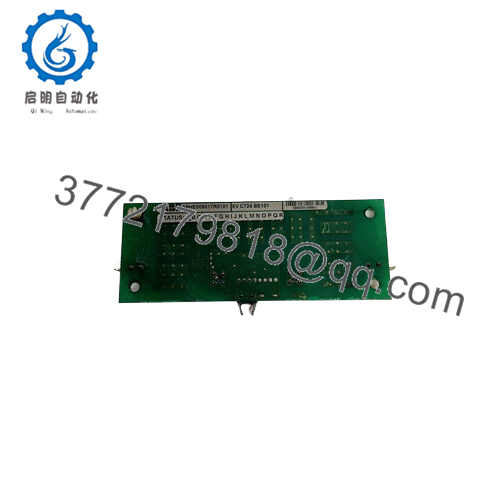
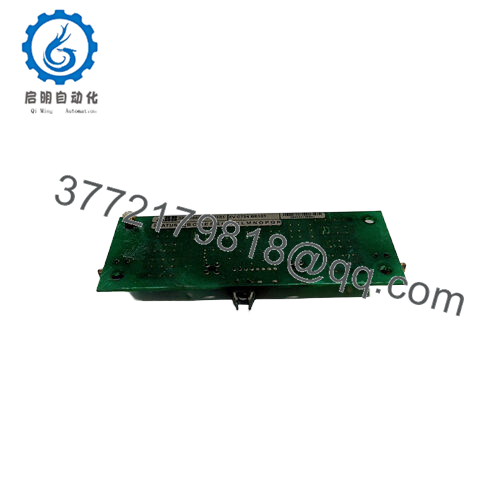
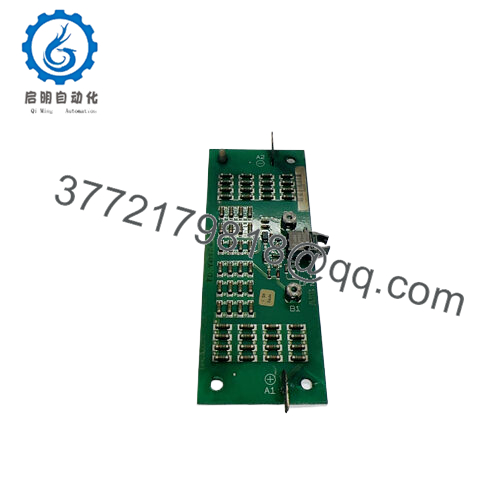
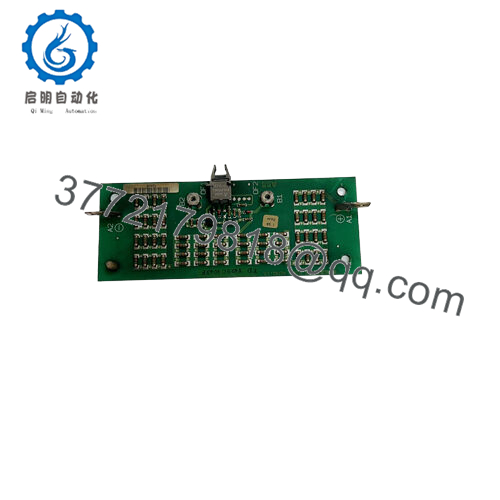
 WhatsApp: +86 16626708626
WhatsApp: +86 16626708626 Email:
Email:  Phone: +86 16626708626
Phone: +86 16626708626